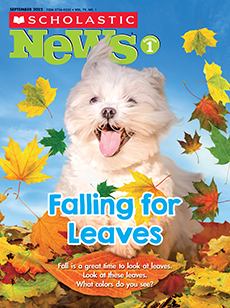A guide for using our resources
Children will discover different ways to make friends at school.
Vocabulary: share, kind
Social and Life Skills: relationship
CCSS (and states that have similar standards): RL.1.1 key details; RF.1.1 punctuation; RF.1.2 vowel sounds; RF.1.3 decode words; W.1.2 writing; RI.1.10 read first-grade texts; SL.1.2 ask and answer questions
Simple, spectacular ideas to boost your lessons.
Paired Text Suggestion: A Friend for Henry by Jenn Bailey
Paired Text Suggestion: A Friend for Henry by Jenn Bailey
- This sweet story follows Henry, who is eager to make a new friend. In various school scenarios, Henry meets different kinds of personalities until he finds just the right friend for him.
Background Knowledge: How You Made a Friend
Background Knowledge: How You Made a Friend
- Before reading the issue, ask students to share any ideas they have about how to make a friend. Write down any ideas they share. As you read the issue, refer to the list and acknowledge student responses. Continue adding ideas from the issue to your class list.
- After reading the issue, review the class list. What ideas are kids excited to try out? Are there any ideas they never tried before? Keep the class list up as a reminder that there are opportunities to make friends all school day long!
Hands-on Activity: Find a Friend
Hands-on Activity: Find a Friend
Skills: relationship skills
Materials: Find a Friend skill sheet, clipboard, pencils
- Students will mingle with their classmates and get to know each other!
- Before beginning the activity, review each square in the Find a Friend skill sheet. Model walking around the room and asking questions. Point to a square and ask a randomly chosen student a question pertaining to that square. (e.g., “Do you like soccer?” “Do you have a pet?”) Keep going around the room until a student says “yes!” Have that student write their name or first initial on the corresponding line of your skill sheet.
- Then provide each student with a Find a Friend skill sheet on a clipboard and a pencil. Direct students to walk around safely. Encourage students to ask questions and listen to their classmates.
- When most boxes are filled, have students sit down and share about one friend they talked to during the activity.
